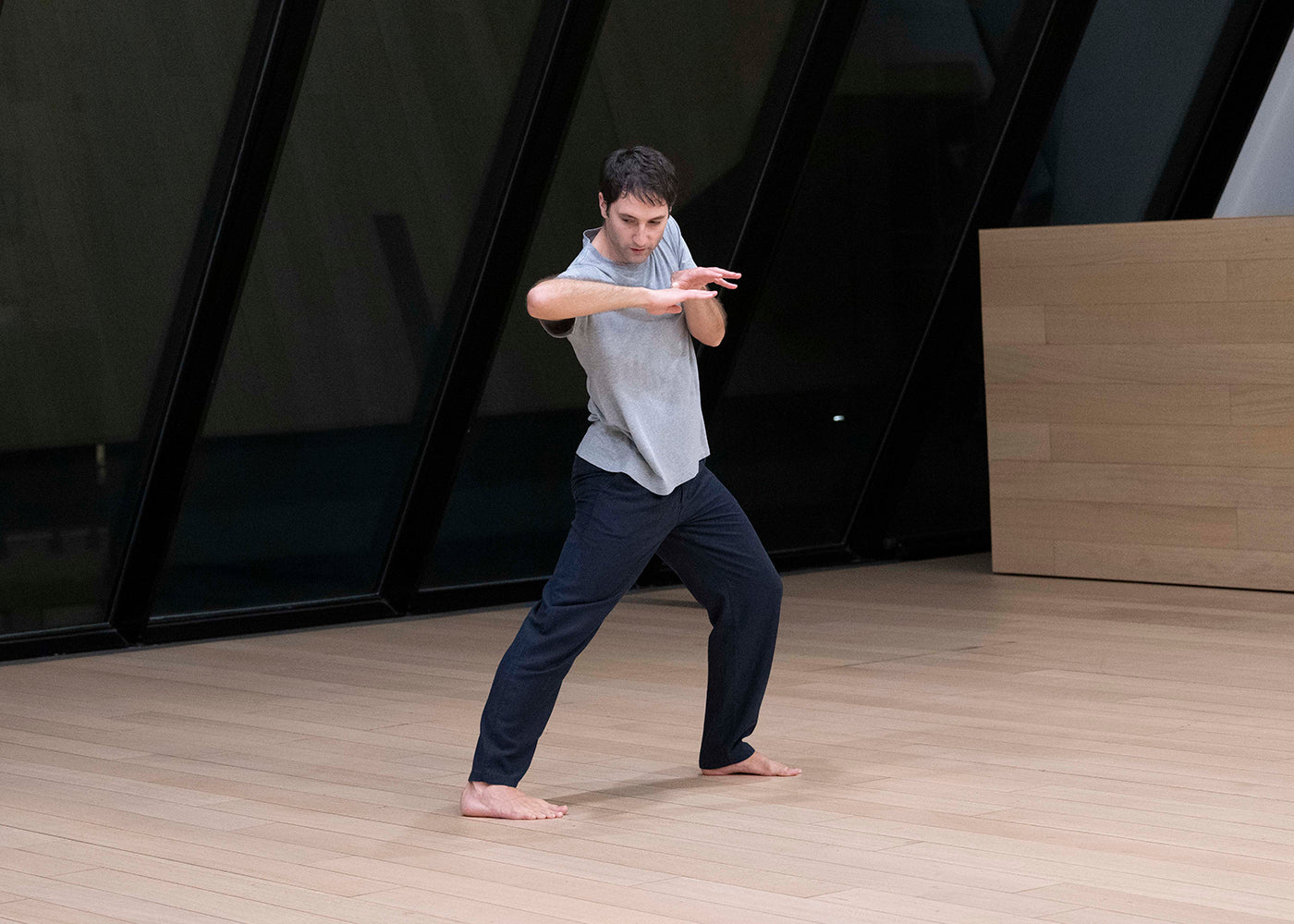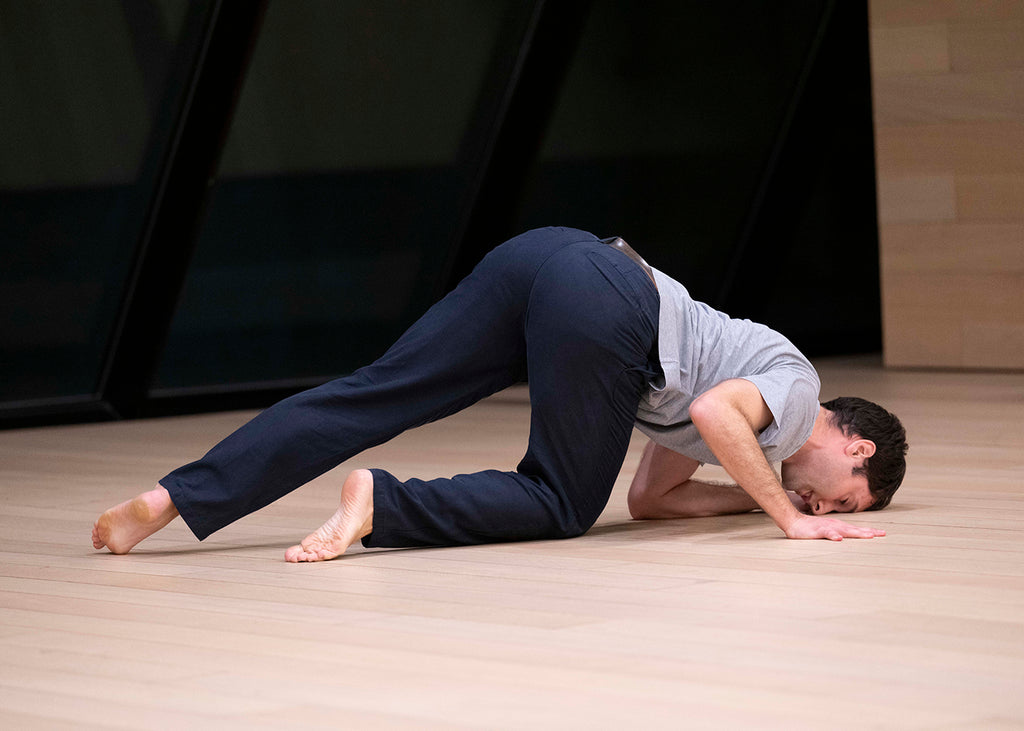Around the perimeter of the sky room of L’Alliance–a French school and cultural center located in midtown Manhattan—is a single row of chairs, arranged in the round. In front of them individual gray-green pillows, which ushers beckon audience members to sit upon if their accessibility needs enable them to do so. A wall-sized slanted window, which acts as the backdrop for this show, lets in no light. The sun has set, and a storm seems to be brewing.
We are here to see Soulier perform the New York premiere of “Mouvement sur mouvement,” or “Movement on movement”—a choreographed lecture inspired by William Forsythe’s Improvisation Technologies. Released via CD-ROM in 1999 (and now available online via YouTube) Improvisation Technologies—A Tool for the Analytical Dance Eye is an interactive guide to how the choreographer approaches improvisation, broken down into multiple parts and types of movement.
Soulier’s “Movement on movement” is, quite literally, a lecture. The Paris-born choreographer begins by addressing the audience with an anecdote about one might find, on any tour bus, a man who feels the need to point out the beauty of surrounding things, even if they are obvious, to the people around him. Soulier, he assents, is this man. For the following 40 minutes or so, he demonstrates this by speaking philosophically and physically about the possibilities of movement.











comments